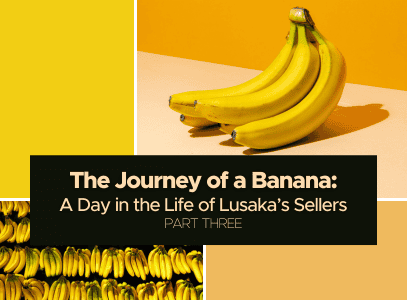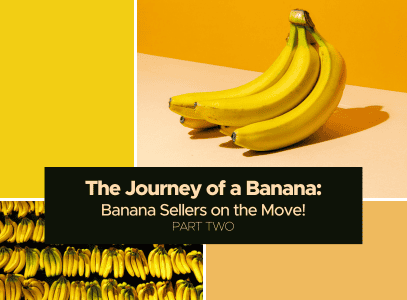Welcome back to my Journey of a Banana series. In the last article, I wrote about my interest in Lusaka’s banana sellers and got a sense of how street vending works in African cities. Today, we’ll follow banana sellers around Lusaka’s streets. We will learn how they get around the city, how far they travel, their modes of transport, and why they choose certain spots to sell their goods.
Where I Bought Bananas?
To break things down, I categorized all the twenty-one interviewed banana sellers into three distinct clusters based on their selling locations in Lusaka:
Cluster 1: City Center
Location: Soweto Market[1] and Freedom Way (outside of Soweto Market)
Number of Sellers: 5
Seller Setups: Wheelbarrows, banana boxes in the market, and head baskets along the streets.
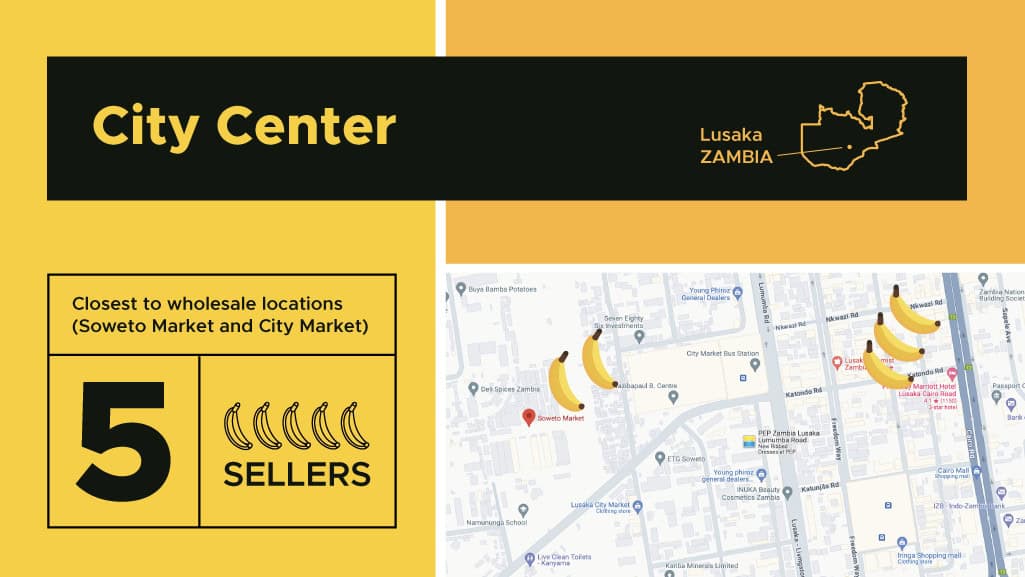
Cluster 2: University Area
Location: Near the University of Zambia (UNZA) and Manda Hill Mall (on Great East)
Number of Sellers: 8
Seller Setups: Mix of informal vendors with wheelbarrows, informal stands, and head baskets. This cluster also contains three formal shops – the Fresh & Go smoothie bar at Manda Hill Mall and two supermarkets.

Cluster 3: University Teaching Hospital (UTH)
Location: Around the University Teaching Hospital
Number of Sellers: 3
Seller Setups: Predominantly wheelbarrow stands, with some informal stands, selling from boxes, and one indoor shop.
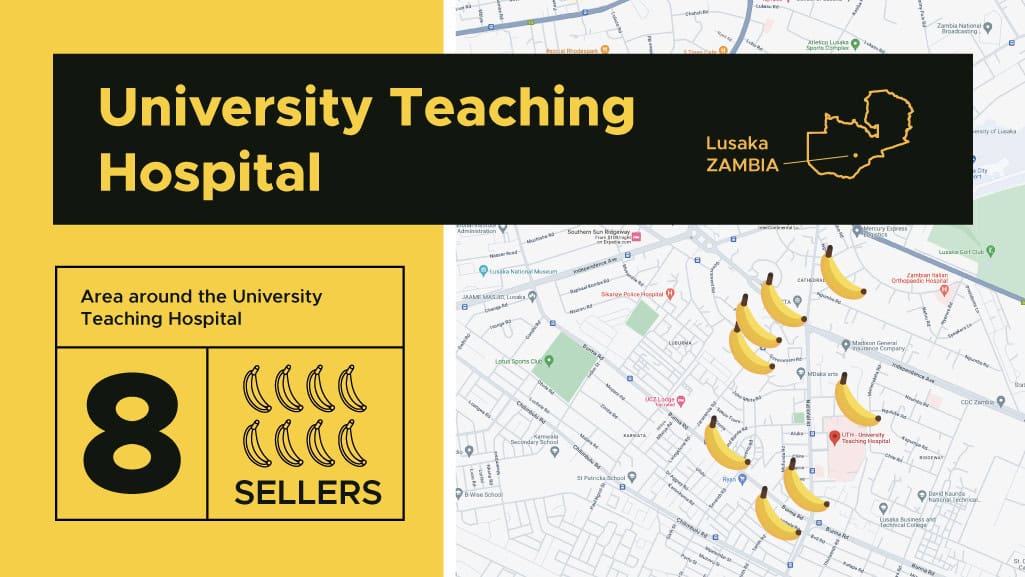
Business Portraits
How do business setups vary among the banana sellers in the clusters I explored? Let’s take a look at the diagram below…

For Cluster 1 (City Center), imagine sellers carrying bananas on their wheelbarrows or in boxes from central Soweto and City Markets and selling nearby in central Lusaka. Cluster 2 (University Area) is the most varied cluster. While there are still wheelbarrows, informal stands and headbaskets, the most notable is the presence of two supermarkets and one smoothie bar (marked as formal shops in the diagram above). Cluster 3 (University Teaching Hospital) was dominated by wheelbarrow sellers, with some representation from informal stands and selling from boxes, with one informal indoor shop.

As we can see, among the banana sellers in Lusaka I interviewed, wheelbarrow stands (marked in blue) were the most common business setup, followed by formal and semi-formal stands of all shapes and forms.
Who’s Behind the Wheel (barrows)?

Based on my interviews, a larger portion of banana sellers were male. There were fifteen men in total, marked in red in the diagram. However, female sellers were also present. I interviewed six women, marked in blue. They mostly operated in stationary setups or carried bananas in head baskets.
Tracing the Banana Route
As you can see in the diagram above, street fruit vendors primarily source bananas from the Soweto Market (blue) and City Market (red), both located downtown. I managed to track down the Soweto Market wholesale location (see picture below) and saw the way bananas get packaged and picked up by sellers. Notably, a single fruit vendor mentioned Kamwala Remand Prison as their wholesale source. Lusaka’s branches of the supermarket chain Shoprite get bananas delivered from a wholesaler named Freshmark, distributing from Sheki-Sheki Road south of the city center. Finally, the smoothie bar chain Fresh & Go gets their bananas from The Deli Spices, a wholesaler near central market locations.
Following the banana beyond Lusaka, I discovered that bananas in the Zambian market are sourced from various regions including Mazabuka, Nega Nega, Mkushi, and Kafue. There’s also mention of bananas coming from neighboring Zimbabwe. This indicates a range of agricultural hubs within Zambia and regional trade connections.
How Bananas Move Around
Let’s compare how banana vendors travel from home to wholesale locations to pick up bananas and then to their selling spots.

- Minibuses: Predominantly favored for journeys from home to wholesale across all clusters. The efficiency and convenience offered by minibuses make them a top choice for sellers starting their day.
- Walking & Wheelbarrows: Especially prominent in Cluster 1, walking and using wheelbarrows become more common for shorter distances from wholesale to selling points. The wheelbarrow offers the flexibility of being both a transport method and a mobile selling point.
- Vans, Taxis, and More: Formal shops get bananas delivered using vans, while some street vendors traveling from wholesale to selling point choose taxis or continue to travel on minibuses. This variety is due to the specific needs of the selling locations and the volume of bananas being transported.
- Unique Choices: Some sellers, like one shop owner in Cluster 3, adopt unique methods, such as bicycles, to quickly restock. Such choices might be driven by the need for speed, proximity to the wholesale, or personal preferences.
In summary, traveling using a minibus from home to wholesale is shared across all clusters. This suggests sellers are willing to pay for transportation to save time or energy. However, when moving from the wholesale to selling points, choices differ. Walking and carrying goods manually is a trend, especially in Cluster 1. Wheelbarrows, particularly common in Cluster 3, enable sellers to be mobile and carry larger quantities.
Bananas on the Go
Who Moves and Who Doesn’t?
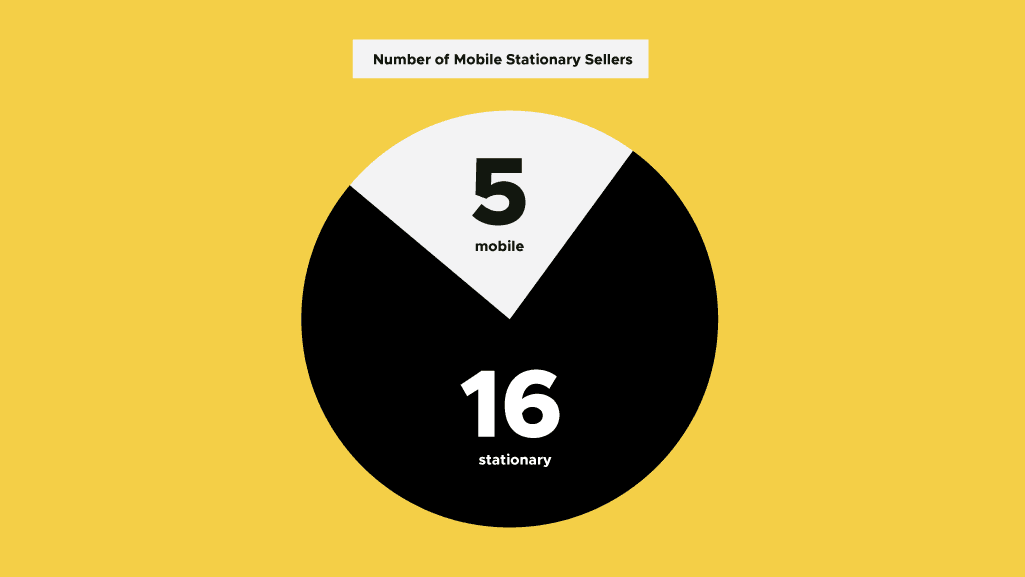
Five of the interviewed sellers move around Lusaka throughout the day, either with wheelbarrows or carrying fruits in headbaskets. This approach allows sellers to tap into different customer bases throughout the day.
The rest of the sellers remain stationary throughout the day. These are sellers with designated stands or shops or sellers who use their wheelbarrows to display their goods but don’t use them to move around the city. Staying in one spot builds regular clientele, minimizes transportation efforts, and offers a consistent presence in the market.
From Homes to Markets
How do banana sellers navigate the city’s streets, particularly when considering the distance from their homes to the markets and the wholesale locations?

As we can see from the map above, some sellers may live close to their selling spots but often travel to get fresh bananas from wholesalers. Why? Bananas go bad quickly. So, sellers need to stock up on fresh ones often, even if it means more travel.
Vendors in Cluster 1 have shorter travel distances with an average daily travel of 16 km. Their selling points are close to the city center, allowing them easy access to fresh produce from nearby wholesalers.
On the other hand, Cluster 2 has longer travel distances, averaging 25 km daily. While many live near their selling points, sellers need to take extra trips to central wholesale locations to get fresh produce.
Lastly, sellers from Cluster 3 have an average daily travel of 20 km. They come from various parts of Lusaka, attracted by the increased demand for fresh fruits around the University Teaching Hospital.
Reflecting on Lusaka’s Banana Ride
After spending time with Lusaka’s banana sellers, here’s what we found:
- Traveling Far and Wide: Many sellers travel a lot each day. Especially those in Cluster 2, who travel about 25 km on days when they pick up fresh bananas. Sellers often sell from different areas to those where they live, trying to find the best places to sell for good earnings.
- Wholesale Trips: Sellers go to wholesalers often, and it’s not just to get more bananas. Freshness is critical in this job. Bananas can spoil quickly, and if they’re not fresh, they won’t sell. So, getting fresh stock is a must, even if it means a longer trip.
- Getting Around: Most sellers use a minibus from their homes to the wholesale. This mode of transport is relatively quick and worth the extra cost. When moving from wholesale to the selling point, vendors might use minibuses, taxis, walk, or carry bananas using wheelbarrows or headbaskets.
- Smarter Choices: Sellers’ choices aren’t entirely random. They think about where they sell and how they get there. They consider travel costs, how fresh their bananas are, and where most customers might be.
We’re almost done with our banana journey in Lusaka. In the next and final blog post, we’ll shift our focus from the broader landscape to the individual stories that make it up. Get ready to explore the unique strategies of wheelbarrow sellers, delve into gender dynamics, and understand the nuances of banana pricing in Lusaka. Stay ‘bananas’, and see you soon!




